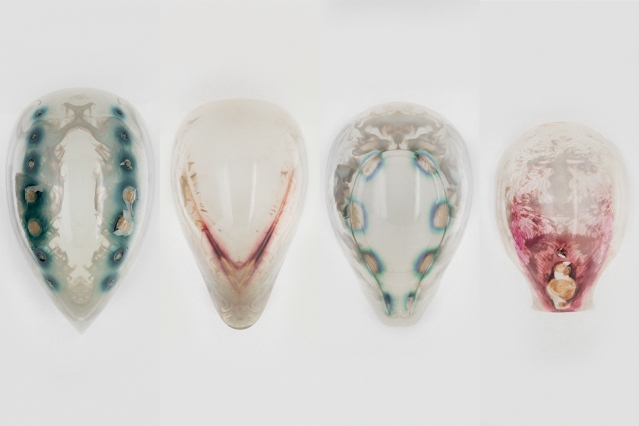Nothing these days is designed or manufactured without thousands of preliminary cycles of parametric modeling in which variables are continuously modified and explored. Using AI software and massive cloud data, thousands of design options can be quickly compared. As a result designers, engineers and scientists better understand a product and design options.
This approach has transformed the traditional manufacturing paradigm. Designers can now easily explore how renewable and non-toxic resources such as natural minerals, crystallization, and biomaterials might improve a design. And additive manufacturing, generative design, and other forms of biomimicry can be modelled as well.
Heavy reliance on non-renewable resources and their associated environmental damage can be eliminated from the design and manufacturing process and product lifecycle. And engineerable living cells can be incorporated into static and environmentally sustainable materials to create new composites with special biological and medical therapeutic properties.
Digitally Fabricated Objects Using Computational Algorithms
Recently, an interdisciplinary group of researchers led by a team from MIT came together to study how the digital fabrication of 3D printed objects used in medicine could incorporate chemical signals and therapeutic resins modeled using computational algorithms.
Hybrid Living Materials (HLM) combine living and non-living materials resulting in composites that combine the functions of both materials. The goal is to create programmable, replicable control of genetic expression on the surface of 3D printed objects.
Controlling & Patterning the Production of Drugs
Researchers are testing chemical substances including antibodies, antimicrobial drugs and vitamins integrated into wearable devices customized to a patient’s biomarkers and body shape. Application of this technology can detect environmental contamination to respond and adapt in real time.
Video: Printing 3D Objects the Incorporate Living Organisms
Industry Tap articles on 3D Printing
IndustryTap has written extensively on 3D printing technology and markets including nerve cell printing, biobots and biodegradable 3D printing materials. In 2020, innovation in 3D printing is continuing at a breakneck speed as new fields and fabrication processes are revolutionized.
- A 3D Bioprinter That Can Make Full Size Ears, Muscles
- Broken Bone? Biodegradable Magnesium Implants Could Replace Steel and Titanium Support
- New Heart, Liver, Kidney or Eye in under 2 hours: Bioprinting
- Global 3D Bioprinting Market to Reach $150 Billion by 2030
- University of Florida Researchers Figured Out How to 3D Print
- Scientists Print Nerve Cells With Low-Cost BioBot 3D Bioprinter
- The Accelerating Use of 3D Printed Metal Parts in Manufacturing
- Chinese Construction Company, Winsun, Just 3D-Printed a 5
- Watch World’s Biggest 3D-Printer Making World’s Biggest 3D
- Delving Into The Recent Developments In 3D Printing Materials







